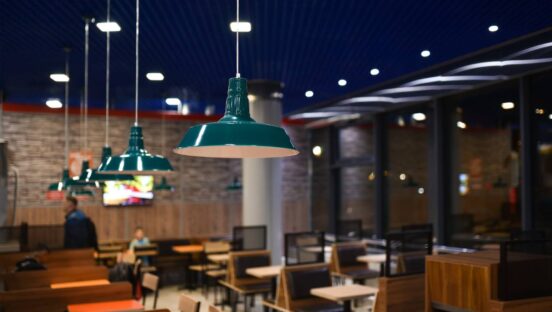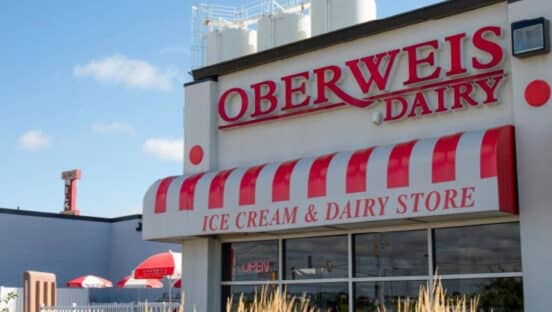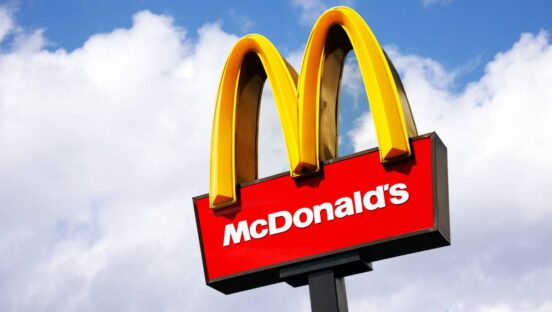TDn2K’s vice president of insights and knowledge, Victor Fernandez, put the restaurant industry’s current standing in clear terms. In what he called, “this new world of persistently eroding guest traffic,” expecting strong year-over-year sales growth is just not realistic.
The reality is, per TDn2K’s latest Black Box data, the average restaurant continues to see guest counts dwindle. That’s been the case each year since the recession. For the industry to consistently post healthy sales growth, the traffic erosion needs to be stopped.
And the cure-all remedy, despite months of aiding results, isn’t higher checks. The reason being it’s difficult to lap positive results with stronger results, without tossing another fix into play that doesn’t bump against a fast-approaching ceiling.
In August, same-store sales fell 0.7 percent, year-over-year, TDn2K said, marking the second consecutive month in which restaurants failed to growth comps. The last time the industry experienced two consecutive months of negative same-store sales growth was January and February of 2018. The difference then, though: You could blame bad winter weather.
READ MORE:
“The latest disappointing results could not be attributed to any external factors, thus raising questions about the current health of the industry,” TDn2K said.
But that’s not to say the slowdown is surprising or even panic-button worthy. Sales comparisons in the second half of 2019 were expected to track tougher, year-over-year, given the industry’s stellar performance during the last two quarters of fiscal 2018.
“August’s same-store sales growth compared with the same month two years ago is actually an encouraging 1.2 percent,” Fernandez said in a statement. “The industry’s sales continue to be better than they were two years ago in comparable stores.”
Since the beginning of 2019, only February and July posted negative sales growth on a two-year basis. Between August 2017 and December 2018, just October–December 2019 achieved two-year positive same-store sales growth.
“In other words, the industry’s performance has held up in recent months from a longer-term perspective … A period of strong sales growth such as 2018 should be expected to be followed by a softer year, as we’ve seen so far in 2019,” Fernandez added.
For perspective, same-store sales in August 2018 increased 1.8 percent. At the time, it marked the highest growth rate since September 2015. Yet it’s worth noting the performance measured against a 2017 period that included the impact of Hurricane Harvey, which dropped comps 15 percent in Texas the week it hit. So, it’s difficult to really judge year-over-year results without taking into consideration the ebb and flow of sales trends.
While 29 percent of full-service restaurants reported an increase in vacancies at the management level, 38 percent of counter-service chains reported an increase.
However, August’s Achilles heel was a familiar foe. Same-store traffic declined 3.9 percent in August (it was down 0.6 percent in August 2018). Along with negative 4 percent in July, the industry has now reported the two worst months in almost two years based on year-over-year results.
Last year’s 0.6 percent drop was the strongest traffic growth of 2018, making this number, understandably, flash even redder. If you calculate traffic on a two-year basis, it remains relatively unchanged, however. August’s same-store traffic growth compared with August 2017 was negative 4.6 percent—the average for the previous 12 months.
“There is little comfort in knowing the industry keeps losing guests at the same pace as it has been for the last year,” Fernandez said, “but at least the bleed is not getting worse.”
By region, only four of the 11 areas tracked by Black Box experienced positive sales growth in August. The Mountain Plains region was the strongest, with a 0.57 percent sales bump to accompany a 2.41 percent drop in traffic. The Western, Southwest, and Southeast were the only other regions to enjoy positive comp sales. Local performance aligned with July. Compared to 43 percent of markets posting positive sales last month, 45 percent did so in August.
New England was the weakest region, with negative sales and traffic of 2.88 and 5.98 percent, respectively.
The labor battle drums on
Quick-service brands continue to shoulder the heaviest burden of recent pressures. Compared to 27 percent of full-service restaurants reporting non-management vacancies, 44 percent of limited-service chains said they had an increase in unfilled positions, according to TDn2K.
With turnover numbers increasing yet again, successful operators are looking beyond compensation to up their value proposition, the company said. Brands investing in more leadership development opportunities that spend more time on training tend to have better numbers when it comes to turnover, TDn2K said.
Per its People Report, year-over-year job growth was 2.14 percent. In July, rolling 12-month turnover rates for restaurant hourly employees and managers increased once again, keeping the industry at historically high levels.
As has been the case for some time as well, continued job growth coupled with difficultly finding capable workers led to an increase in unfilled positions across the industry. Based on TDn2K’s Workforce Index, quick-serves felt the burn here, too. While 29 percent of full-service restaurants reported an increase in vacancies at the management level, 38 percent of counter-service chains reported an increase. That to go along with the aforementioned non-management gap draws a difficult picture.
“When asked what works to improve employee retention at all levels within their restaurants, operators frequently mention things like improved training as well as career development,” TDn2K said. “And the data supports these responses. A recent TDn2K analysis revealed restaurant brands that invest in their managers’ leadership development and spend time training them on HR specific topics results in lower turnover.”
Joel Naroff, president of Naroff Economic Advisors and a TDn2K economist, noted that the labor market remains key to continued consumer spending. The recession remains an emerging threat. “The trade battle between the U.S. and China is creating enough collateral damage that there are now worries that a global economic slowdown is nearing,” he said in a statement. “The U.S. economy continues to expand, but with new tariffs being imposed and more possible, the future is more uncertain. Europe is being battered by the weakening in its two major trading partners. Japan is hurting as well. The U.S. manufacturing sector is faltering. Indeed, the only positive segment of the economy is consumer spending. That is being supported by a solid job market and decent income gains.”
“But, payroll increases have slowed and the decline in the unemployment rate has stopped, raising questions about whether consumer confidence can remain high enough to sustain the spending,” he added. “The labor market is the key. If jobs remain plentiful, households will have the funds to keep growth going. If it falters, it would likely take a sudden end to the trade war to prevent a recession.”
Moving forward, the restaurant industry is expected to experience lagged sales and traffic growth during the final third of the year. Average same-store sales growth of the last four months of 2018 was 1.3 percent, compared with an average of 0.5 percent for the first months of last year. Given those tough measures, small positive sales growth “is a best-case scenario” for the remainder of 2019, TDn2K said.
“Flat to declining sales growth is a distinct possibility, especially if consumer confidence begins to suffer as news of trade wars continue fanning the recession flames,” the company added.
Additionally, the effect of Dorian could be felt in the coming weeks, although a jump in sales could follow during a recovery period.












